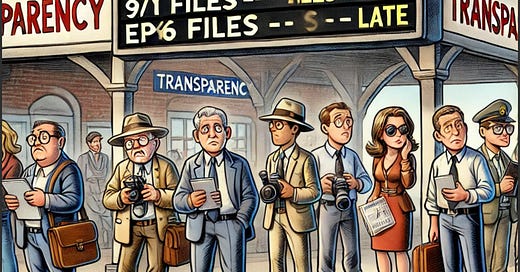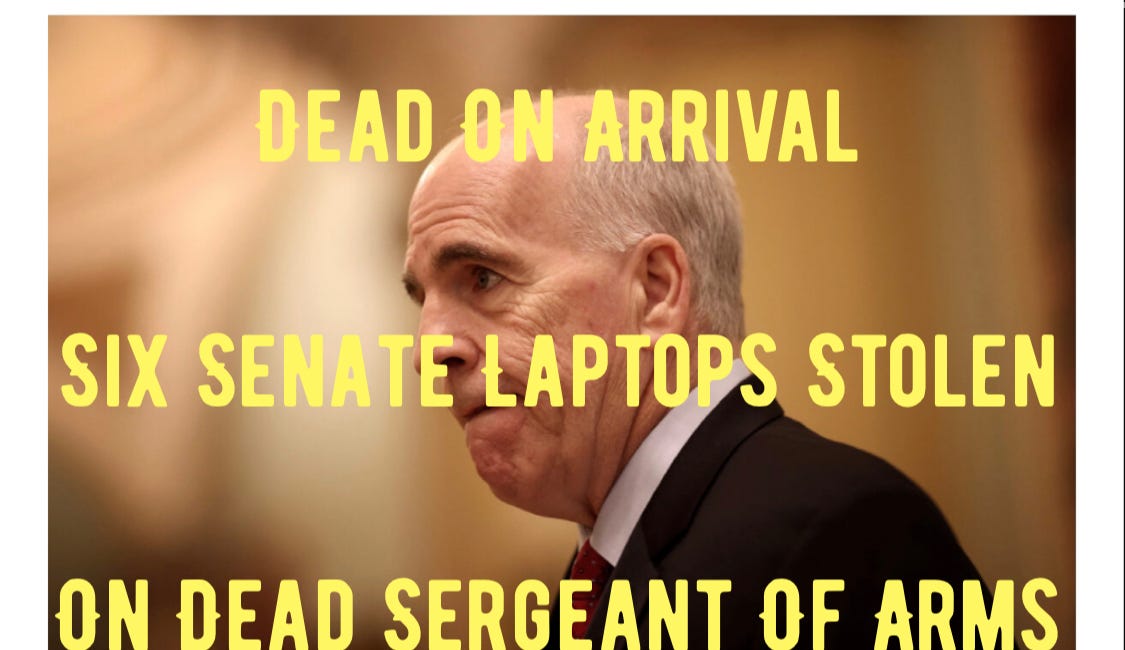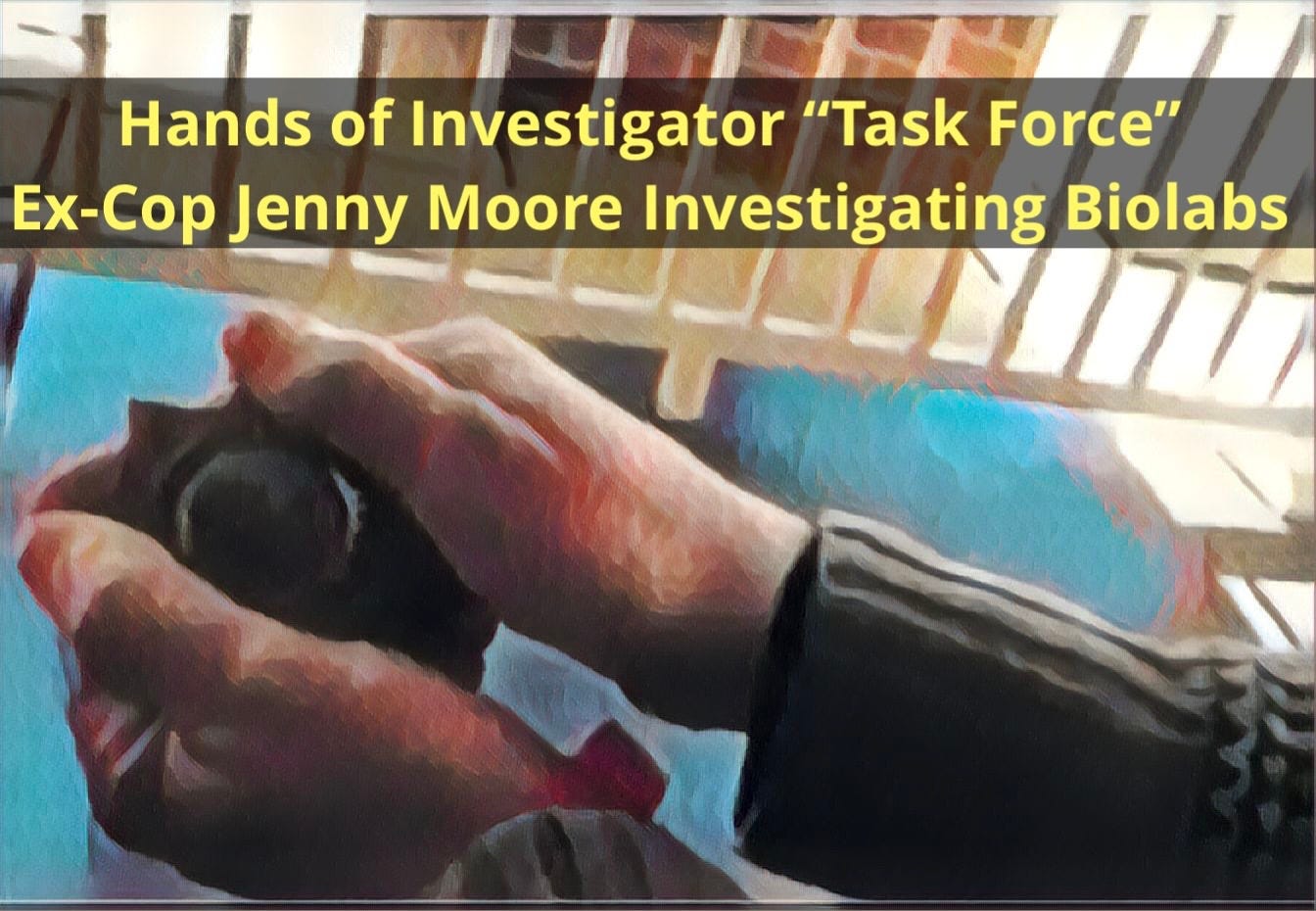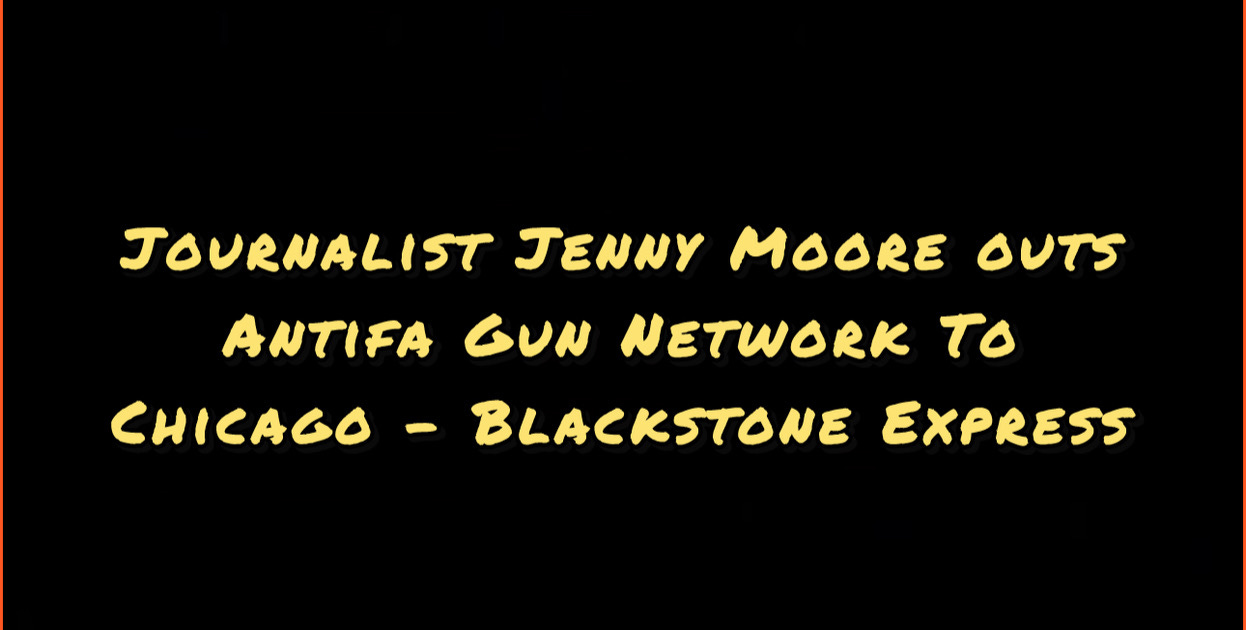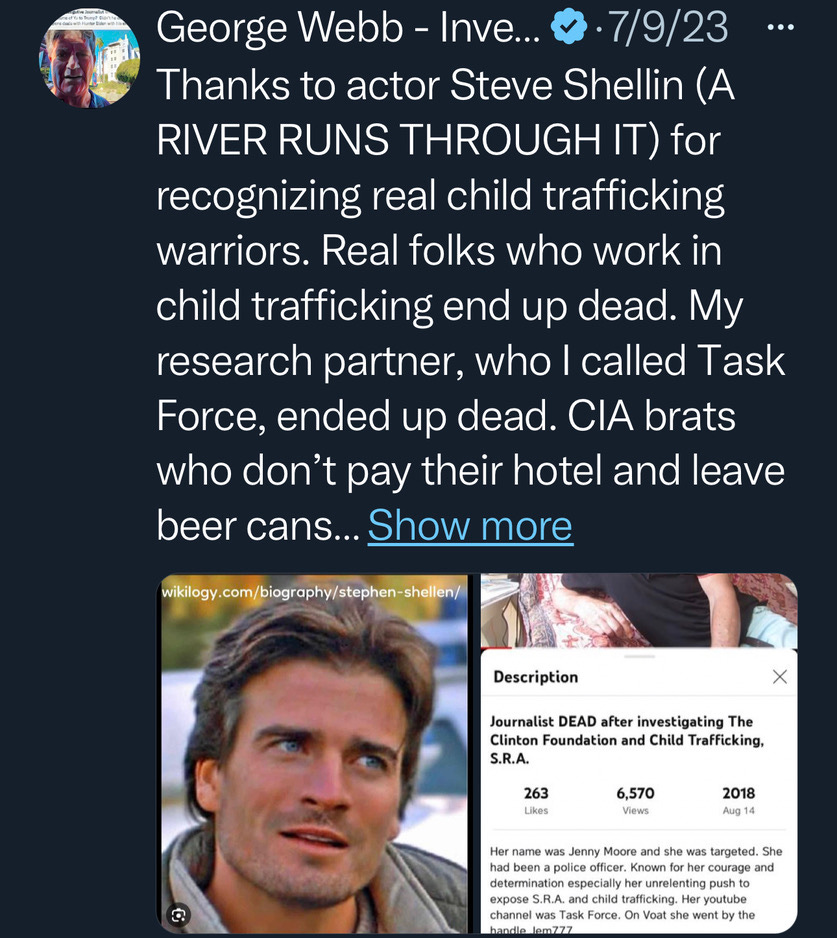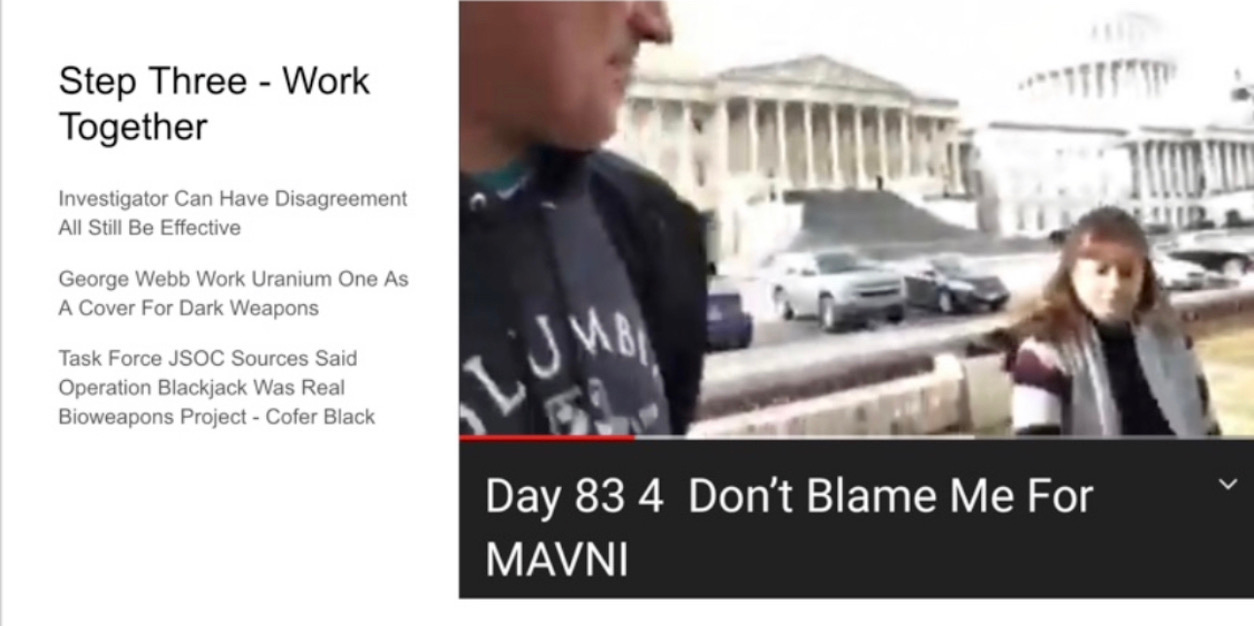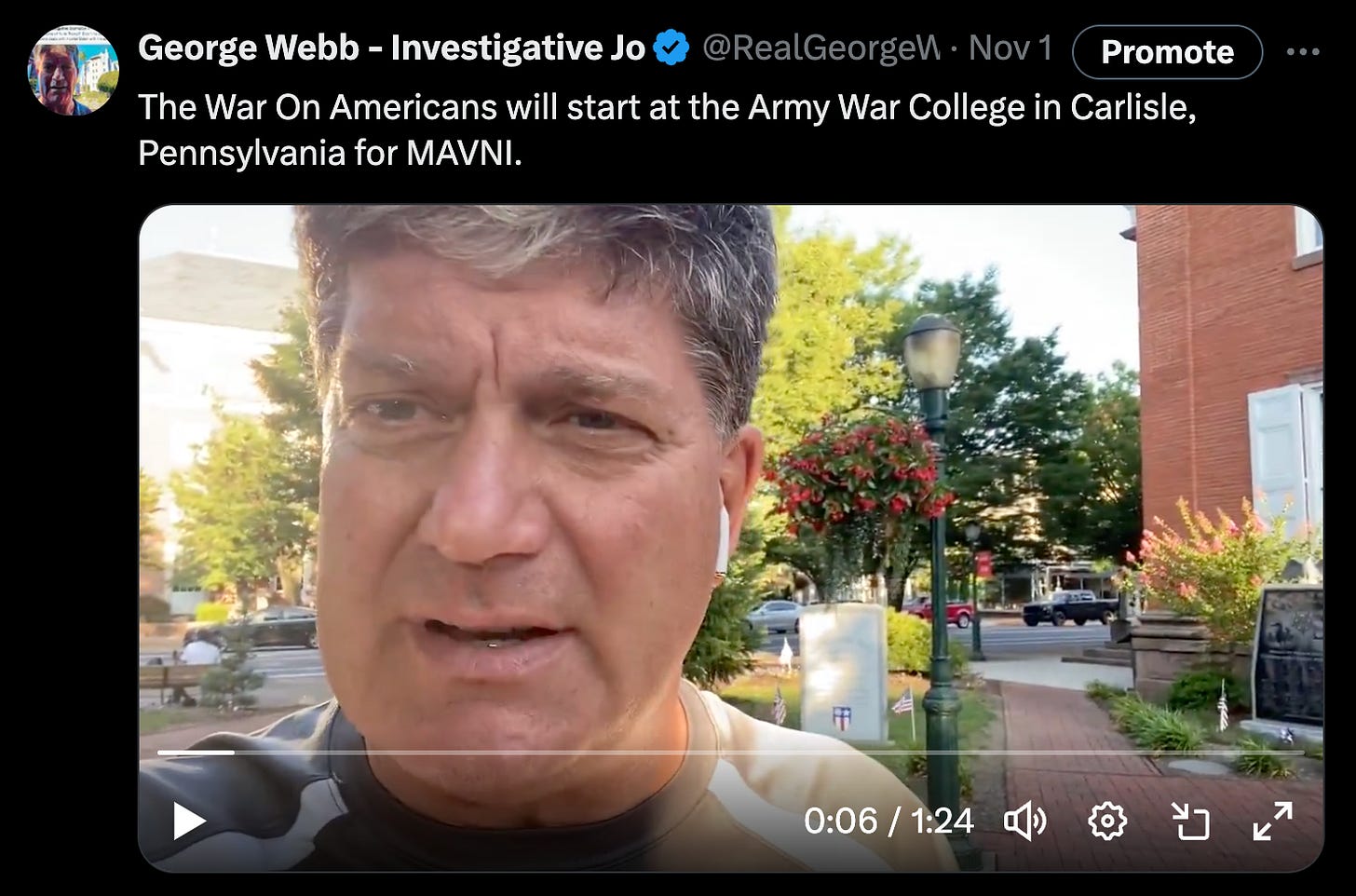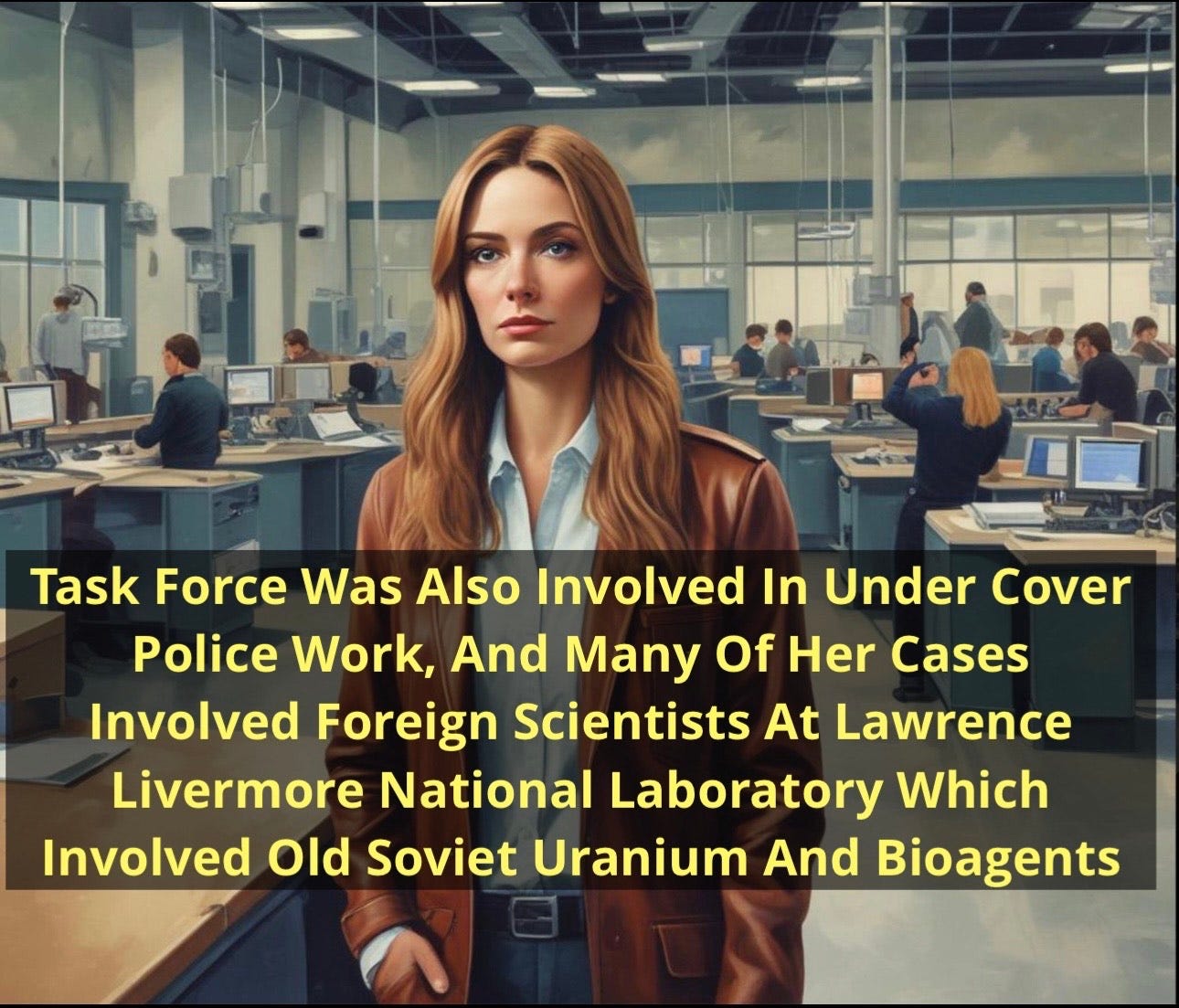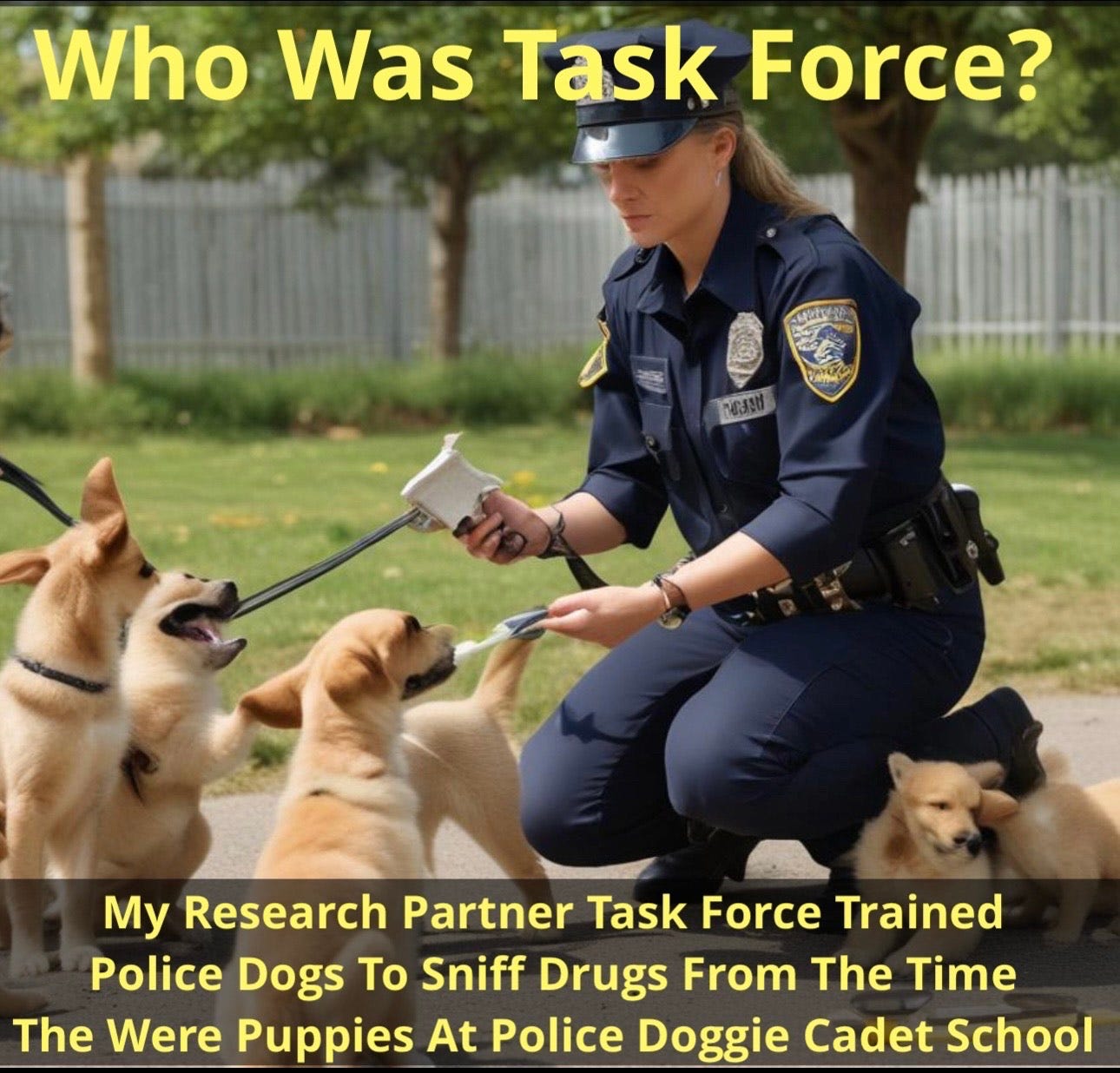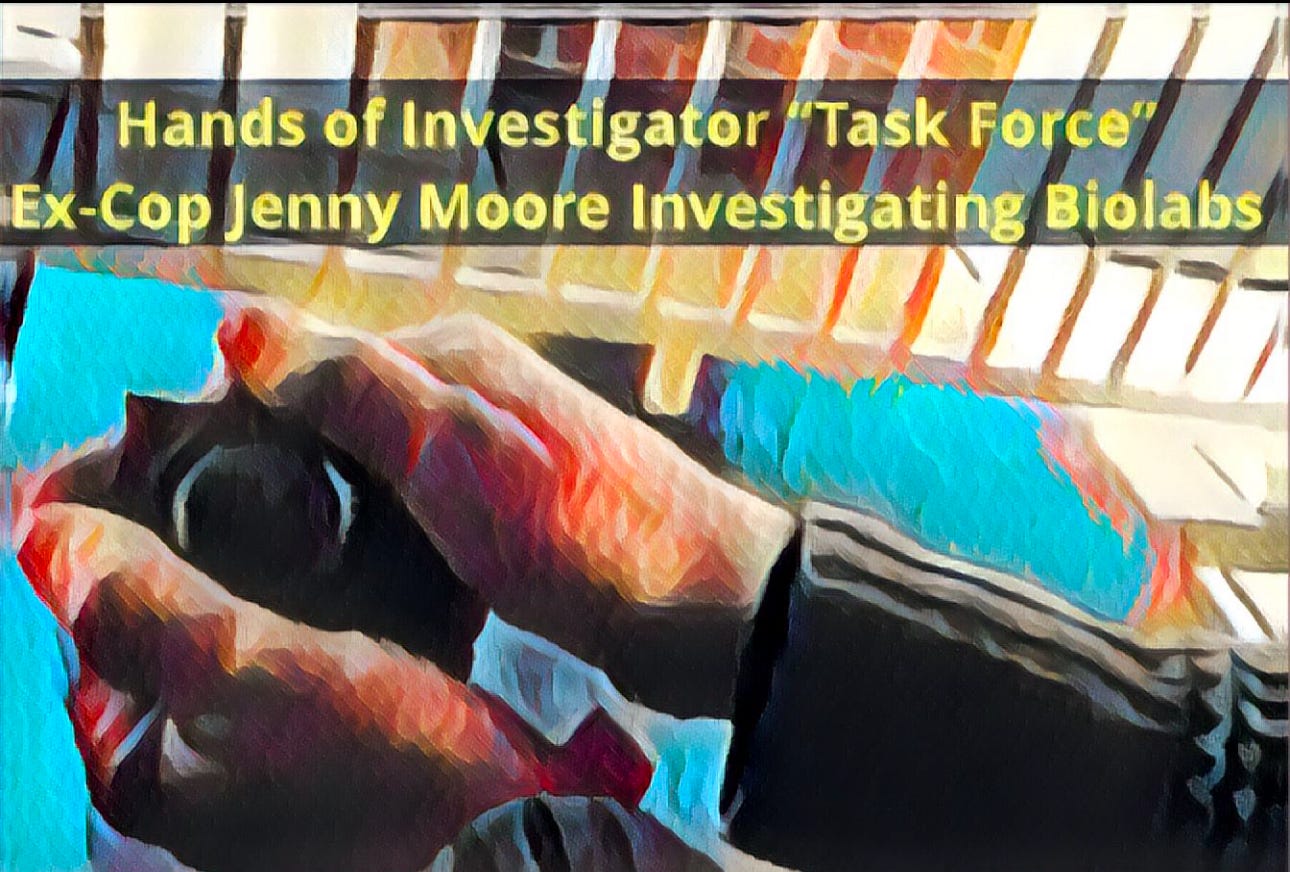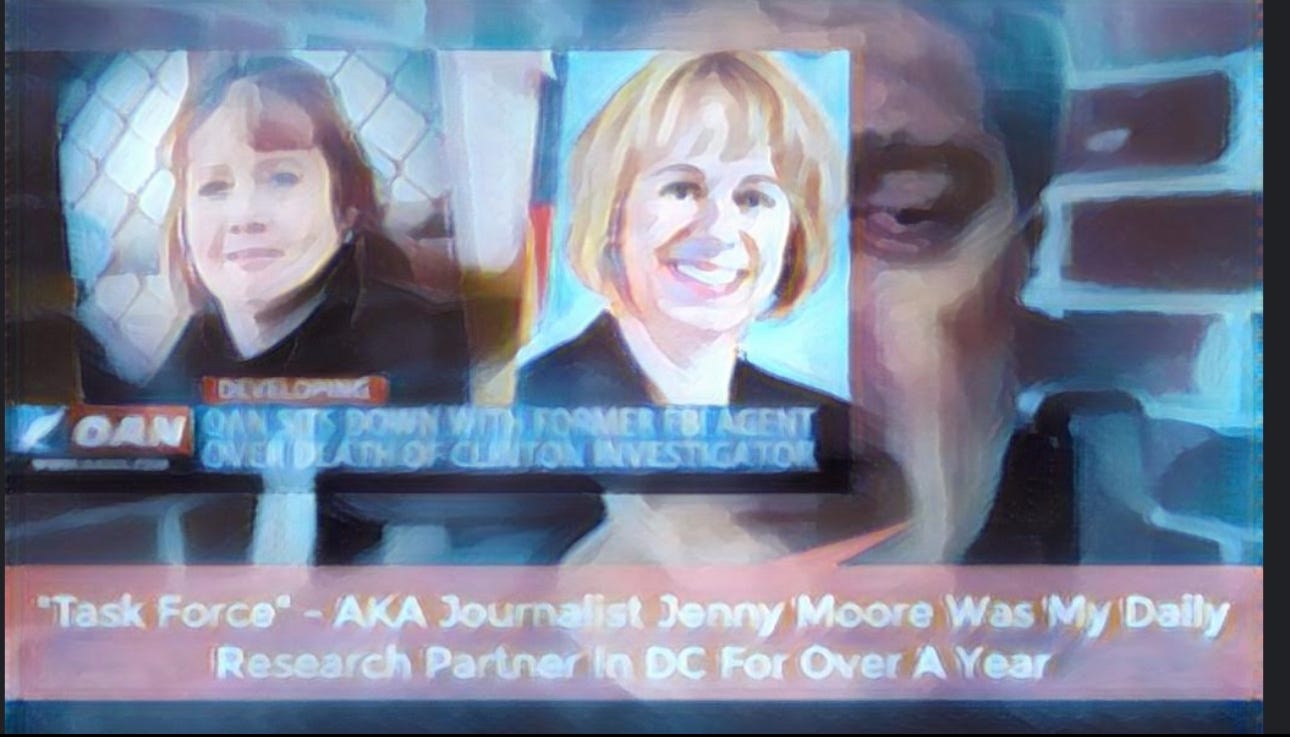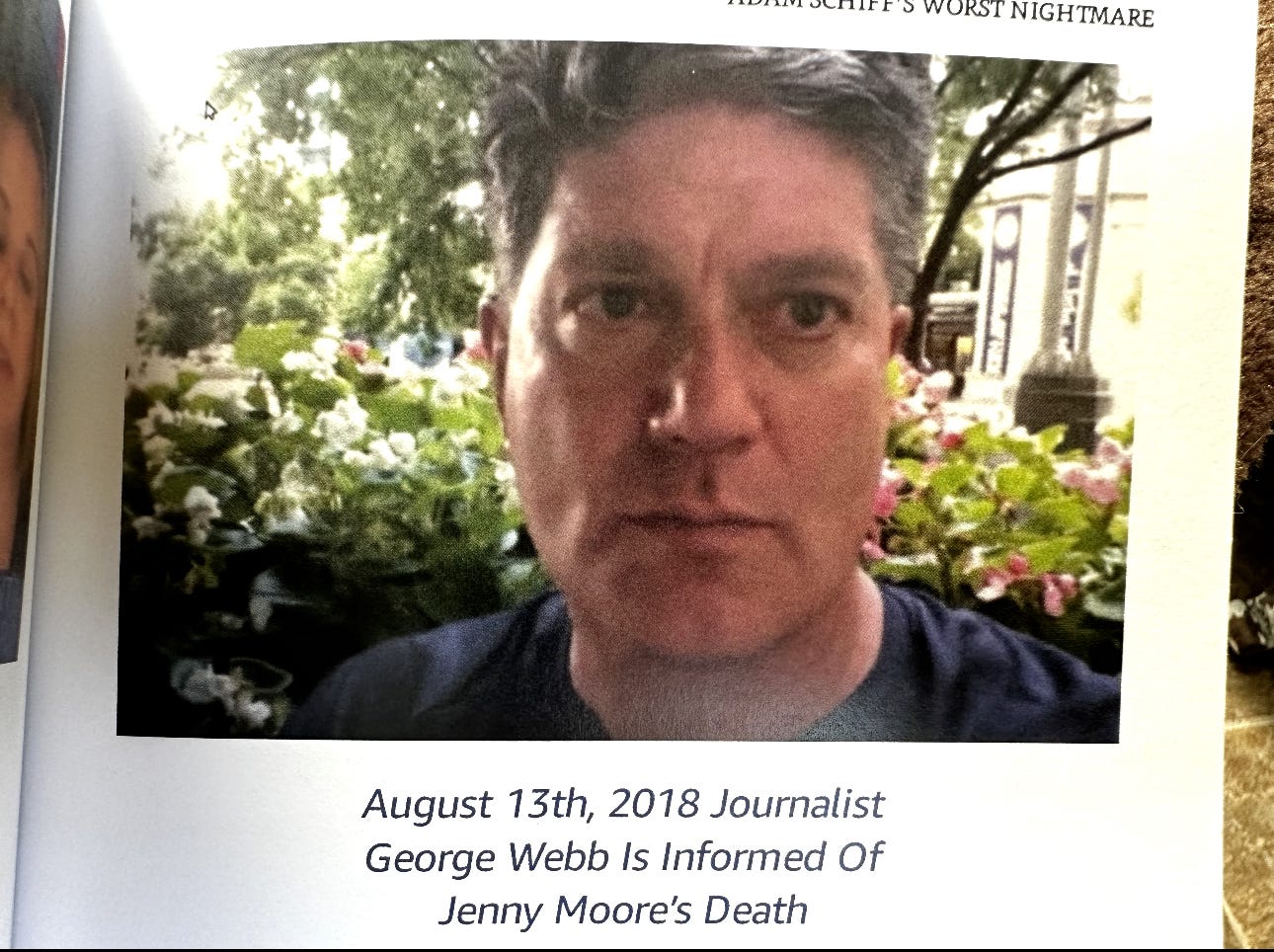Real J6 Series Introduction - Just Published
From the shooting death of the Senate Sergeant of Arms to the Mock Trial in Michigan
While everyone waits for the promised files from JFK, RFK, MLK, Epstein, 9/11, and J6, I just thought I would recap the files our Citizen Journalism have delivered already. I have collated the J6 Files here in a new series called “Real J6” as opposed to Fake News, Let’s Load The Buses At Ft. Bragg, False Flag Psy-Op J6.
Most of you remember we called out Joe Biggs and the Orange Hats live on J6 at the Capitol Gates, which exonerated President Donald Trump in the false flag that Pelosi and Schiff were trying to entrap Trump in.
George Webb
George Webb is the author–investigator who frames the article as both a progress report on his Citizen-Journalism “Real J6” project and a tribute to his late research partner, Jenny Moore. He reminds readers that his team has already surfaced key evidence—such as time-coded video of gate provocateurs on January 6—even as official JFK, RFK, MLK, Epstein, 9/11, and J6 files remain sealed.
Webb positions himself as a live on-scene witness who identified orange-hatted agitators like Joe Biggs in real time, thereby exonerating Donald Trump from an alleged Pelosi-Schiff entrapment.
The article doubles as a personal memoir, revealing Webb’s ongoing grief for Moore and his determination to continue her investigative style.
Jenny Moore (“Task Force”)
Jenny Moore, code-named “Task Force,” was a former police officer and rape-victim counselor who evolved into a fearless independent journalist. She infiltrated the Awan Spy Ring’s residences, personally served Imran Awan with a DNC lawsuit, and warned veterans renting suspect Springfield, Virginia houses about potential bio-hazards.
Moore’s colleagues in the FBI and Joint Special Operations admired her readiness to charge into danger armed only with a phone—an attitude Webb calls the “Green Action Button.” She died under mysterious circumstances while chasing leads on government surveillance and BlackBerry-based espionage, cementing her legend among citizen reporters.
Kirsten Dunst
Kirsten Dunst’s war-photographer in the 2024 film Civil War is presented as a cinematic echo of Jenny Moore. While Dunst’s character travels with Black Hawks, Humvees, and armed escorts, Moore pursued equally perilous stories with no external protection. The movie’s reflective scenes capture Moore’s fatalistic awareness that journalism might cost her life, a nuance Webb felt viscerally while watching. Dunst’s portrayal thus provides a pop-culture “visual vocabulary” for understanding Moore’s off-screen heroism.
Joe Biggs
Joe Biggs, a Proud Boys figure wearing an orange hat, was singled out by Webb’s livestream on January 6 as a provocateur at the Capitol gates. Webb argues that exposing Biggs in real time foiled a staged narrative that would blame Trump for orchestrating violence. Biggs represents the “False Flag Psy-Op J6” actors whom Webb labels as part of a Ft. Bragg bus-loading operation. The identification of Biggs underpins Webb’s claim that citizen journalism beat mainstream media to the truth.
Nancy Pelosi
House Speaker Nancy Pelosi appears as a principal architect—alongside Adam Schiff—of an alleged plan to entrap Trump through orchestrated January 6 chaos. Webb contends that Pelosi’s security decisions shaped the environment that allowed provocateurs to breach the Capitol. He claims her subsequent investigative committees ignored exculpatory evidence collected by citizen journalists. Pelosi’s role exemplifies how political leaders can leverage crisis narratives for partisan advantage.
Adam Schiff
Congressman Adam Schiff is portrayed as both a narrative manipulator and a frightened insider who once begged Moore not to expose him in the Longworth House cafeteria. Webb alleges Schiff suppressed leaks involving Lawrence Livermore National Laboratory and may have profited from illicit technology transfers. The article contrasts Schiff’s Hollywood storytelling heritage—through screenwriter father Ed Schiff—with Moore’s unscripted, boots-on-the-ground reporting. Schiff thus embodies the clash between polished disinformation and raw investigative truth.
Eric Swalwell
Eric Swalwell, another California Democrat, is imagined in a “chase scene” after Moore as she escapes with Hillary Clinton’s BlackBerry server. Webb links Swalwell to earlier controversies over alleged Chinese espionage and suggests he works to shield establishment secrets. The hypothetical pursuit dramatizes Swalwell’s perceived hostility toward whistleblowers. His cameo underscores congressional resistance to grassroots probes.
Ted Lieu
Congressman Ted Lieu joins Swalwell in Webb’s cinematic riff, sprinting after Moore and a briefcase of freshly reprogrammed Biden BlackBerrys. Lieu’s public branding as a cybersecurity advocate contrasts with Webb’s charge that he defends compromised IT aides like the Awans. The article uses Lieu to symbolize lawmakers who talk transparency yet impede genuine oversight. His presence highlights bipartisan reluctance to confront internal data breaches.
Imran Awan
Imran Awan, the Pakistani-born IT aide at the center of the “Awan Spy Ring,” was personally served with legal papers by Moore on live video. Though formally charged only with bank fraud, Awan is depicted as a linchpin for unauthorized access to congressional data and possible BlackBerry re-imaging for high-level officials. Webb sees Awan’s case as proof of systemic security negligence on Capitol Hill. Citizen journalists treat him as a gateway figure linking domestic politics to foreign intelligence.
Ray Abbas
Ray Abbas, an associate of the Awans, gained notoriety for installing covert cameras in McDonald’s bathrooms before landing a no-show congressional job. Moore tracked Abbas to a Springfield, Virginia house bristling with giant microwave dishes and warned tenants of potential chemical or biological dangers. Abbas exemplifies how seemingly low-level actors can embed within sensitive political networks. His story illustrates Moore’s habit of following obscure threads that mainstream outlets ignored.
Klaus Schwab
World Economic Forum founder Klaus Schwab appears in a brief aside: Webb was in Ravensburg, Germany covering Schwab’s alleged “payout scheme” to sustain the Ukraine war when Michael Stenger died. The mention frames Schwab as a global influencer who incentivizes prolonged conflict. Webb portrays the WEF as an elite layer above national politics, quietly financing outcomes. Schwab’s cameo situates the J6 narrative within a wider web of transnational interests.
Michael Stenger
Michael Stenger, the Senate Sergeant-at-Arms on January 6, is said to have died of sudden “turbo cancer” after laptops under his purview were allegedly stolen. Webb insinuates that the missing devices contained a decade of covert-operation data attractive to foreign actors present at the Capitol. Stenger’s death is framed as suspicious and possibly punitive. His fate reinforces the article’s theme of whistleblowers and custodians meeting untimely ends.
Vice President Mike Pence
Mike Pence is discussed in relation to the “Fake Pipe Bomb” that might have triggered Continuity of Government protocols, briefly transferring presidential authority from Trump to him. Webb questions whether Pence’s security team exploited the device to authorize lethal force against protesters. The scenario feeds into a broader claim of orchestrated power plays on January 6. Pence thus becomes a fulcrum between lawful succession and covert opportunism.
President Donald Trump
Donald Trump is depicted as the intended fall guy for a Pelosi-Schiff false-flag operation aiming to paint him as an insurrectionist. Webb argues that real-time citizen footage of provocateurs dismantles that narrative, effectively exonerating Trump. The article posits that mainstream “lawfare” against Trump persists despite contrary evidence. Trump’s role encapsulates how political figures can be targeted through managed crises.
Joe Biden
Joe Biden surfaces through references to “Biden BlackBerrys,” devices allegedly reconfigured by Imran Awan for clandestine communications. Webb implies that revealing the data on these phones could upend accepted history. Moore and Webb hoped to expose this trove but were thwarted by her untimely death. Biden’s name therefore anchors the story’s unresolved thread of encrypted secrets.
Hillary Clinton
Hillary Clinton’s private email saga re-enters via the hypothetical image of Moore sprinting from the Capitol with Clinton’s BlackBerry server. Webb casts Clinton’s device as a Rosetta Stone of hidden correspondence. The symbolism underscores the intersection of personal tech and national security. Clinton embodies the long tail of email-related controversies that inspire ongoing grassroots sleuthing.
Ed Schiff
Ed Schiff, a Hollywood screenwriter and father of Adam Schiff, is cited to show how narrative craftsmanship runs in the congressman’s family. Webb suggests Adam leverages this heritage to script political storylines and manage public perception. The reference underscores the divide between fabricated drama and Moore’s unfiltered reporting. Ed Schiff becomes a metaphor for the theatrical veneer overlaying real-world intrigue.
Entities / Locations
“Real J6” Series
“Real J6” is Webb’s new compilation of citizen-collected videos, documents, and analyses countering what he calls mainstream “Fake News” about January 6. The series aims to archive evidence that provocateurs, not Trump supporters, initiated the breach. It grew out of a February 2024 Michigan mock trial where Webb screened J6 – A True Timeline on a cinema screen. The project embodies grassroots attempts to preserve an alternative historical record.
Task Force Orange Journal
Task Force Orange Journal is Webb’s reader-supported Substack platform where the article is published. It serves both as an investigative archive and as a community hub for crowd-sourced research. Subscribers fund travel, data acquisition, and protective measures for field reporters. The journal amplifies under-reported stories like the Awan Spy Ring and Moore’s exploits.
Senate Sergeant-at-Arms Office
The Senate Sergeant-at-Arms is portrayed as the storage point for six covert-operations laptops allegedly stolen by a Ukrainian operative on January 6. Webb contends that control over this office equated to control over a decade of sensitive missions. Michael Stenger’s sudden cancer diagnosis after the theft fuels suspicions of foul play. The office symbolizes institutional vulnerability amid political upheaval.
World Economic Forum (WEF)
The WEF appears as an elite body allegedly engineering financial incentives to prolong the Ukraine conflict. Webb’s trip to Ravensburg to cover this “payout scheme” contextualizes J6 within global power games. The organization is framed as manipulating geopolitical outcomes behind closed doors. Its cameo reinforces the transnational scope of modern political theater.
Continuity of Government (COG) Trigger
The so-called “Fake Pipe Bomb” near the Capitol is said to have activated COG protocols, briefly empowering Pence. Webb implies this mechanism allowed security forces to escalate to deadly force. He questions who planted the device and why mainstream outlets downplayed the procedural implications. The episode exemplifies how emergency statutes can be weaponized.
CNN / Mainstream Media
CNN and other legacy outlets are accused of ignoring citizen-gathered evidence while advancing a “Trump lawfare” narrative. Webb describes their posture as deliberate disinformation that props up official storylines. He argues that independent footage of provocateurs was readily available yet systematically dismissed. The media’s alleged complicity underscores themes of narrative control versus transparency.
Awan Spy Ring
The Awan Spy Ring comprised Pakistani-linked IT aides who serviced dozens of Democratic lawmakers’ computer systems. Webb and Moore allege the group conducted unauthorized data exfiltration and device re-imaging. Their suburban residences doubled as clandestine tech hubs outfitted with microwave dishes. The scandal remains a cornerstone of Webb’s broader thesis on congressional cyber-insecurity.
Democratic National Committee (DNC)
The DNC is cast as both victim and enforcer—its servers were breached, yet it allegedly suppressed internal whistleblowers like Moore. Webb recalls Moore serving Awan-related legal papers at a D.C. law office defended by Clinton-aligned attorneys. He positions the DNC as a central node in managing post-breach spin. Its portrayal reinforces systemic reluctance to confront inconvenient facts.
Lawrence Livermore National Laboratory (LLNL)
LLNL stands as a high-stakes source of nuclear and bio-defense secrets. Webb accuses Adam Schiff of involvement in facilitating leaks from the lab, which Moore sought to expose. The lab thus becomes a battlefield for competing information pipelines—official secrecy versus illicit profiteering. Its mention elevates the stakes from political scandal to national-security breach.
BlackBerrys / Biden BlackBerrys
Encrypted BlackBerry devices represent the article’s holy grail of hidden communications. Webb alleges Imran Awan reprogrammed these phones for Joe Biden and other officials, creating a secure shadow network. Recovering their contents could, in his view, rewrite recent political history. They embody the fusion of personal tech and covert statecraft.
McDonald’s Bathroom Camera Scandal
Ray Abbas’s illicit camera installations at a McDonald’s franchise reveal how mundane jobs can mask intelligence-adjacent activity. Moore’s discovery of this detail led her to connect Abbas to congressional patronage. The fast-food setting underscores the banality of entry points into espionage networks. It illustrates Moore’s knack for turning small clues into major leads.
Springfield, Virginia Awan House
This suburban property sported three oversized microwave dishes and served as lodging for U.S. veterans unaware of its spy-ring ties. Moore entered the house, photographed suspicious hardware, and cautioned residents about possible chemical exposures. The location crystallizes how espionage infrastructure can hide in plain sight. It becomes a microcosm of the article’s “danger next door” motif.
Capitol Hill / U.S. Capitol
The Capitol is both the scene of Moore’s imaginary dash with Clinton’s server and the real locus of January 6 unrest. Webb depicts it as a fortress of secrets vulnerable to insider breaches and staged provocations. Evidence gathered at its gates forms the backbone of his “Real J6” timeline. The building stands as a contested symbol—either a citadel of democracy or a stage for managed crisis.
But fewer people remember how we said the Senate Sergeant of Arms was the place that the Ukrainian there that day would go to steal six laptops involved in covert operations over the previous decade. The Senate Sergeant of Arms would die in a hail of Turbo Cancer. I was in Ravensburg, Germany covering Klaus Schwab and a payout scheme concocted by WEF to keep the Ukraine War going, so I wasn’t able to cover the Michael Stenger murder story in person.
Real J6 - Part Four - Death On The Senate Steps - Were The Senate Blackberrys The Reason?
A Senate Blackberry belonging to Joe Biden found in May 2017 connects to yet another death on Capitol Hill - this time the Senate Sergeant at Arms.
Many of you remember the Mock Trial we held in Michigan where we presented the time coded documentary “J6 - A True Timeline” on the big movie screen in Michigan in February 2024, validating our live call at the Capitol Gates on J6.
We also covered the Fake Pipe Bomb, and whether that trigger Continuity of Government for Vice President Mike Pence to briefly take over the US Government from President Donald Trump to authorize deadly use of force at the Capitol and a dossier program for all J6 attendees.
Real J6 - Part Two - Did J6 Trigger Continuity Of Government?
New evidence has emerged on Capitol Hill to support the thesis I put forward in my 2021 book, “At One They Strzok”, including the shocking revelation that a retired government employee has been connected to the planting of a pipebomb at the DNC and Capitol Hill Club, and an inactive pipebomb was founded by Capitol Policeman for pipe bomb near the DNC.
We also covered CNN and all other mainstream media ignoring all the incontrovertible evidence and plowing ahead with the Trump lawfare of J6.
And we also had a little fun and wondered what a J6 Rock Opera with Joe Biggs, Nancy Pelosi, Adam Schiff, and the Orange Hats might look like.
Real J6 - Part Five - Should J6 Be A False Flag Rock Opera?
🧵 Article Summary – "The Psyops Play: A Rock Opera"
I will continue to add to the series, but enjoy for now!
Here is Part Six in the “Real J6” series about my research partner, whom I called Task Force. It was hacked and destroyed.
Summary of the Article on Jenny Moore and the Movie “Civil War”
This article draws a striking parallel between real-life investigative journalist Jenny Moore, known as “Task Force,” and the character played by Kirsten Dunst in the 2024 film Civil War.
While the Dunst character operates within a militarized cinematic environment—protected by Black Hawk helicopters, Humvees, and armed escorts—Jenny Moore conducted dangerous investigations with no more than a phone in her hand and the courage of her convictions. The author argues that while Civil War captures the spirit of wartime journalism, it only scratches the surface of the real-life heroism Moore embodied through her fearless exposés and frontline whistleblowing against the Washington establishment.
Moore, a former police officer and rape victim counselor, traveled from a law enforcement background into investigative journalism. She died while actively pursuing explosive stories that could have changed public understanding of intelligence operations and political corruption. Like Dunst’s character, Moore was both a mentor and a moral compass to her male colleagues—including the article’s author—and was revered by FBI agents and Joint Special Operations insiders alike. Moore’s fatalism, captured in the quiet, reflective scenes of Civil War, mirrors her own foreboding sense that her truth-telling would cost her life.
Throughout the piece, the author recounts several real-life operations that showcased Moore's audacity and intelligence. She served a lawsuit tied to the Democratic National Committee on Imran Awan, leader of a congressional IT spy ring, while a team of Bill Clinton-connected lawyers tried to stop her. She infiltrated homes connected to the Awan network, including one with three massive microwave dishes in Springfield, Virginia, warning unsuspecting tenants—many military veterans—of potential chemical or biological dangers. One such house was linked to Ray Abbas, a figure fired for secretly installing bathroom cameras and later employed in a no-show congressional job. Jenny personally walked into these homes, interviewed occupants, and documented her findings—never pausing, never hesitating.
The author imagines that if Hollywood had wanted to depict the real Jenny Moore, the movie would have featured high-speed chases involving Hillary Clinton’s Blackberry Server, Biden’s reprogrammed BlackBerrys, and congressmen like Eric Swalwell and Ted Lieu scrambling to cover up the truth. Unlike fictional characters who hesitate or seek shelter under fire, Task Force “only knew the Action Button.” She did not “play-act,” as the author says—her confrontations were not staged, and her courage had no stunt doubles.
A sharp critique is reserved for Congressman Adam Schiff, whom Moore attempted to expose as being deeply involved in the coverup of sensitive U.S. secrets, including information tied to Lawrence Livermore National Laboratory. Schiff, the son of Hollywood screenwriter Ed Schiff, is painted not as a savior of democracy but as someone who used storytelling and the illusion of narrative control to manipulate perception and suppress dissent. The author recalls Schiff’s frightened demeanor when Moore approached him, comparing it to the cowardly last moments of the fictional President in Civil War, who begs for his life before being executed.
The article closes on a deeply personal note, with the author mourning Jenny Moore’s death and celebrating the warrior-journalist she was. Though she lacked the resources of a war zone photojournalist, she had something more potent: uncompromising moral clarity, tactical instincts, and a relentless pursuit of truth.
The author asserts that had she lived, they would have broken the Biden BlackBerry scandal, exposed hidden networks, and amplified suppressed voices. He acknowledges criticism for comparing Moore to a fictional character but maintains that Civil War has finally given the world a visual vocabulary—albeit a dramatized one—to understand what it was like to work alongside her.
In the final tribute, the author simply says:
“RIP Jenny, you finally got your movie.”
People
Jenny Moore ("Task Force")
Jenny Moore, a former police officer and rape victim counselor, later became an independent investigative journalist dedicated to exposing corruption in Washington, D.C. She worked under the alias "Task Force" and was known for her fearless infiltration of intelligence-linked environments, including homes tied to the Awan Spy Ring. Jenny died under mysterious circumstances while pursuing leads related to high-level government surveillance, cyber-espionage, and political corruption. Many of her peers and sources—military, FBI, and citizen journalists—regarded her as a brave, no-nonsense truth-seeker who led from the front.
Kirsten Dunst
Kirsten Dunst portrays a war photographer in the film Civil War, embodying the investigative journalist archetype in a chaotic near-future America. Her character is widely seen as a composite of real-world war correspondents, though her quiet determination, mentorship, and fatalism reflect qualities associated with Jenny Moore. Unlike Moore, Dunst's character is protected by military convoys and heavy arms, underscoring the contrast between cinematic heroism and real-world vulnerability. Her performance resonated with those who knew Moore, capturing her emotional intensity and unwavering dedication.
Adam Schiff
Adam Schiff, a U.S. Congressman and former House Intelligence Committee Chair, is portrayed here as a figure who feared being exposed by Task Force. Schiff has long been associated with sensitive national security narratives and was allegedly involved in suppressing whistleblowers tied to the DNC and Awan investigation. Jenny Moore reportedly confronted Schiff's office and witnessed firsthand his unease regarding her probes into intelligence leaks. Schiff, the son of screenwriter Ed Schiff, is portrayed as someone who understands the power of narrative and uses it to his advantage.
Eric Swalwell
Eric Swalwell is a Democratic congressman from California who has served on the House Intelligence Committee. Known for his involvement in high-profile investigations related to Russia and Trump, Swalwell was also linked to controversy surrounding Chinese espionage through alleged connections to Fang Fang. In this account, he's described chasing after Task Force in a cinematic hypothetical, symbolic of his efforts to protect establishment secrets. He has also defended the Awan brothers, whom Moore investigated.
Ted Lieu
Ted Lieu is another Democratic congressman from California, closely aligned with progressive and intelligence-community-supporting factions in Congress. He's mentioned here in a satirical "chase" scene involving Jenny Moore and the Biden BlackBerrys, pointing to his role as a defender of those under scrutiny in the Awan IT scandal. Lieu often speaks on cybersecurity, surveillance, and civil liberties, yet has been criticized by some for not supporting whistleblowers. His inclusion highlights congressional figures viewed as obstructing independent investigations.
Imran Awan
Imran Awan was an IT aide for multiple Democratic members of Congress and was the central figure in the so-called “Awan Spy Ring” scandal. Jenny Moore served the DNC-related lawsuit to him directly and investigated his ties to foreign intelligence, particularly Pakistan’s ISI. His employment raised major questions about data breaches, unauthorized server access, and secure communications involving House members. Though prosecuted only for bank fraud, Moore and others alleged his activities represented a deeper intelligence breach.
Ray Abbas
Ray Abbas, an associate of the Awans, was reportedly involved in surveillance activities including installing secret cameras in women's bathrooms. Jenny Moore tracked him to his residence, warning tenants of potential biological or chemical threats linked to suspicious microwave dishes on the property. Abbas' shady employment history and proximity to congressional offices marked him as a figure of intense suspicion. Moore’s entry into his home exemplified her direct, fearless approach to field investigation.
Ed Schiff
Ed Schiff, the father of Congressman Adam Schiff, was a screenwriter, and this familial background is invoked to highlight the theatricality of political narratives. By invoking Ed, the piece critiques Adam Schiff's perceived manipulation of media narratives, drawing a line between Hollywood illusion and political disinformation. The idea is that Schiff’s understanding of narrative control, rooted in his upbringing, contributes to a culture of coverups and spin. This is contrasted with the unvarnished reality Jenny Moore confronted daily.
Organizations / Locations
Lawrence Livermore National Laboratory (LLNL)
LLNL is a federally funded research and development center involved in nuclear research and national security. Jenny Moore reportedly tracked espionage cases involving the lab, tying political figures like Adam Schiff to the illegal sale or transfer of sensitive information. It represents a potential epicenter of the intelligence leak she pursued in her investigative work. LLNL’s history of collaboration with military and intelligence agencies deepens its relevance in biosecurity and counterespionage circles.
The Awan Spy Ring
This refers to a group of IT workers, mainly of Pakistani descent, who worked for dozens of Democratic lawmakers and were suspected of unauthorized access to congressional data. Jenny Moore was central to exposing their network and its ties to foreign intelligence and questionable hiring practices. She entered their homes, documented suspicious hardware like large microwave dishes, and warned veterans renting those properties about potential biological exposure. Despite mainstream efforts to downplay the scandal, it remains a focal point in citizen journalism circles.
Democratic National Committee (DNC)
The DNC is the official governing body for the Democratic Party, and in Moore’s investigations, it was tied to both data breaches and the suppression of internal whistleblowers. Jenny Moore was involved in efforts to serve lawsuits on figures tied to the DNC, especially regarding their handling of the Awan case. Her efforts symbolized a larger movement to hold political parties accountable for cybersecurity failures and insider corruption. The DNC is frequently portrayed in her work as a hub of digital coverups and misdirection.
Capitol Hill / The U.S. Capitol
The U.S. Capitol is the symbolic and operational center of American legislative power. Jenny Moore’s imagined escape from it with Hillary Clinton’s BlackBerry server alludes to her real-world pursuit of critical digital evidence. Her investigations frequently intersected with Capitol Hill through interviews, surveillance, and whistleblower connections. Capitol Hill here is portrayed as both a fortress of secrecy and a ground zero for exposure.
BlackBerrys / Biden BlackBerrys
The BlackBerry devices used by members of Congress and executive branch officials like Joe Biden were a major target of Jenny Moore's investigation. These devices are symbolically tied to encrypted communications, potential espionage, and missing emails—especially Hillary Clinton’s. Moore sought these devices to uncover networks of digital corruption and foreign influence. They are central to the hypothetical “cut to the chase” scenes imagined in the tribute.
McDonald’s (Bathroom Camera Scandal)
This fast-food chain is mentioned due to Ray Abbas’s employment there, where he was reportedly caught installing illegal cameras. This served as an entry point for Jenny Moore to uncover his deeper connections to intelligence-linked work. The scandal highlighted Moore’s attention to obscure but revealing personal histories that pointed to broader surveillance abuse. McDonald’s becomes a symbol of how everyday locations can be linked to darker networks.
Springfield, Virginia (Awan House)
This location housed key members of the Awan Spy Ring and featured suspicious infrastructure such as satellite dishes and signal equipment. Jenny Moore visited multiple homes in this area and warned occupants of possible toxic exposures or surveillance tech. It served as a physical hub for her investigations and a visual symbol of how national security vulnerabilities can exist in suburban America. Springfield also anchors the real-world geography of political espionage.
The new movie “Civil War” actually does a fairly good job of telling the life story of my ex-research partner, Jenny Moore, a woman whom I called Task Force, without the weapons, of course. The real Jenny Moore, the woman that I call Task Force, was involved in many dangerous activities as the Kirsten Dunst character is in ‘Civil War”.
In my opinion, Kirsten Dunst's character covers only the investigative journalist aspect of the Task Force’s life. Being a hero in a lot of dangerous situations is much easier to portray in front of the camera rather than in real life.
(Pardon the typo on such an essential verb as “gives”)
Like the heroine in “Civil War,” played by Kirsten Dunst, Jenny Moore traveled a long way to Washington, DC, after a life of near-death situations as a female cop. Jenny Moore, like the Kirsten Dunst character, also died in the line of duty while trying to get the truth out to the American people. Of course, Jenny Moore, Task Force, didn’t need to have a fleet of Black Hawk Helicopters and Humvees to protect her like Kirsten Dunst had in the movie.
And even more strikingly, Jenny Moore, in her role as a Police Officer and rape victim counselor, was a protector of young women, which is a key subplot to the movie of “Civil War” and the Kirsten Dunst journalist character. Perhaps the characterization of the Kirsten Dunst character that hit closest to home was how her character was a mentor to male colleagues and journalists, such as myself.
Dunst even captured Jenny Moore’s “I know I am going to die doing this” fatalism in her wistful, contemplative recording of injustices. Multiple times during the film, I felt like Dunst had studied the life and even expressions of Journalist Jenny Moore in the story.
But real-life risking journalism is a lot harder to do with no army of helicopters and Humvees in front of you with a posse of machine gun-toting soldiers all around you as Dunst had in the movie. It is a lot easier to play-act than to live out the real thing with only a phone in your hand.
Toward the end of her police career, Task Force trained drug-sniffing dogs from the time they were puppies.
Of course, there is the totally woke end of the movie “Civil War,” which ends in the President pleading, “Don’t kill me” before he is assassinated. As we know in real life, it was Adam Schiff in Congress whose eyes pleaded in the Longworth Office Cafeteria, “Don’t expose me”. And Task Force didn’t assassinate anyone. She only exposed serial, career liars like Adam Schiff, who assassinated his own character. But as Adam Schiff knows as the son of the screenwriter Ed Schiff, everything in Hollywood is make believe.
If Task Force was working for Adam Schiff, the movie Civil War would have covered Jenny Moore's work as a cop, with Moore running down Russian spies stealing secrets from Lawrence Livermore Labs. Jenny Moore exposed Schiff as the key politician actually selling those secrets. Task Force was actually involved in a lot of chases in her police career, so you know Schiff, the Screenwriter, would have played that up for all it was worth.
A better-running action sequel would be Task Force running out of the Capitol with the Blackberry Server and Hillary’s Emails, with Eric Swalwell and Ted Lieu giving chase.
Or perhaps if Jenny Moore got her hands on a briefcase full of Biden Blackberrys freshly configured by Imran Awan, that would have made a good “cut to the chase scene” for a true to life “Real Civil War” movie.
Real life was actually much more exciting. The whole world watched when Task Force served by DNC lawsuit on Awan Spy Ring ringleader Imran Awan while a pack of Bill Clinton lawyers tried to deny Service at their DC law office.
Or the time Task Force talked her way into the home that sheltered a creep named Ray Abbas, who got fired for installing cameras in women’s bathrooms at McDonald’s before getting hired for a no-show job in Congress for over $100K a year? Remember the three gigantic microwave dishes in the backyard of the Awan house in Springfield, Virginia?
Task Force talked her way into every house of the Awan Spy Ring and warned the American veterans renting the homes that if they came down with unusual sicknesses, they might be getting sprayed with something. Task Force wasn’t much for hitting the Inaction Button. She didn’t even know how to spell it.
She only knew the Action button, and she never thought about the danger of a situation. She just went into the potential intelligence operative/terrorist houses (all houses she went to had Pakistani Intelligence ties), and she asked a lot of questions. And I never saw her second guess herself. The Kirsten Dunst character gets scared a lot in “Civil War”, hiding behind walls and losing her courage at times. This was never Task Force. It was the Green Action button all the time.
Jenny Moore didn’t need a screenwriter or a Hollywood director to punch up her career. Jenny Moore was the real deal in journalism, and she had the heart of a lion. She taught me hundreds of things about investigation, and I use the techniques she taught me daily. And yes, I think we would have broken the Biden Blackberry story years earlier if she had lived. And we would have found other witnesses.
Task even helped competitors, just like the Kirsten Dunst character in the movie. Her FBI Agent friends and Joint Special Operation brothers would all take a bullet for her, and she would do the same for them. I have already received some criticism for comparing Task Force to a Hollywood fake character, but at least the world can now get somewhat of a visual of what it was like to work with her.
And now I can say they finally made a movie about her, with a fleet of helicopter and Humvees in front of the Dunst character which Task Force, Jenny Moore, never needed. And I didn’t need acting lessons to express how I felt the day she died.
RIP Jenny, you finally got your movie.


